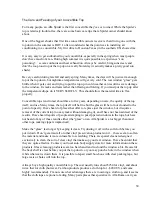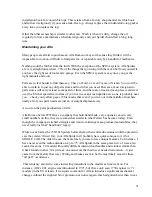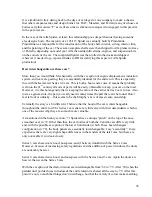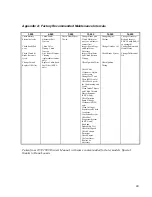
38
It is a tradition in Italy dating back to the days of carriages for one company to make a chassis
that other companies take and design bodies for. FIAT, Maserati, and Ferrari (many of whose car
bodies carry that ornate
”
F
„
as well) are other well-known marques who engaged in this practice
in the post-war era.
In the case of the Alfa Spider, at least, this relationship goes deeper than just having someone
else design a body. The majority of a 105/115 Spider was actually built by Pininfarina.
Pininfarina was responsible for the construction of the body shell, interior, wiring, interior trim,
and the painting of the car. These semi-complete shells were then shipped to Alfa plants in Arese
or Portello, depending on model year. Alfa then added drivetrains, engines, and suspension bits
on the corners of the car. The completed Spider was then rolled to the docks and shipped
wherever it needed to go. (special thanks to BD for clarifying this aspect of Alfa Spider
production)
How interchangeable are these cars?
More than you would think. Mechanically, with the exception of engine displacement, induction
system, and rear axle gearing, they are essentially identical for the entire run. This is especially
true with the Kamm tail Series 2-4 cars. This is both a boon and a curse. It means that probably
well into the 21
st
century all sorts of parts will be easily obtainable to keep your car on the road.
However, it is this homogeneity that is keeping the value of the earlier Series 2 cars so low. Also,
just as a general rule, the part you really need is many times the part that can
“
t be found. Don
“
t
feel left out or unlucky
this seems to be the Murphy
“
s Law of classic auto ownership.
Externally the story is a bit different. I believe that the hood of the car is interchangeable
throughout the entire run. The Series 1 cars share very little else with their descendants, which is
one of the reasons why they are so much more valuable.
As mentioned in the history section,
…
71 Spiders have a unique
”
pinch
„
on the top of the nose,
smoothed over in
…
72. Other than that, the car bodies of both the 2 and 2a cars differ very little
and, with the possible exception of the lower front fender (which I have heard changed
configuration in
…
79), the body panels are essentially interchangeable. I say
”
essentially
„
. In my
experience there are very slight shape differences in the fenders of the later cars, but these are
only noticeable if you look closely.
Series 3 cars share doors, hood, nosepiece, and (I believe) trunklid with the Series 2 cars.
However, because of increasing safety regulations and the addition of power windows, the doors
are noticeably heavier.
Series 4 cars share doors, hood, and nosepiece with the Series 2 and 3 cars. Again the doors are
heavier than even the Series 3 cars.
With the exception of the dash, interiors are interchangeable from
“
66 to
“
79. After
“
70 (when the
padded dual pod dash was introduced) the entire interior is shared all the way to
“
79. After this
point it
“
s not so much that things don
“
t interchange, but that the variety of colors make matching









































